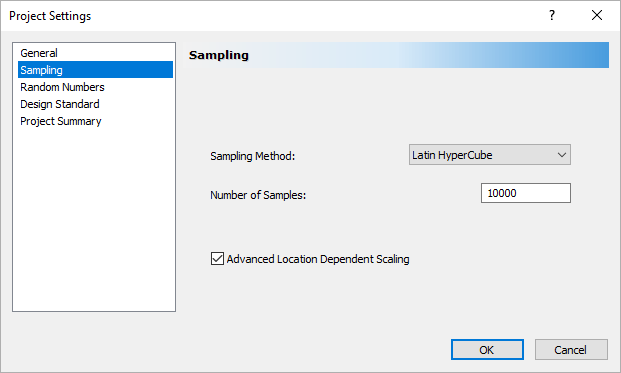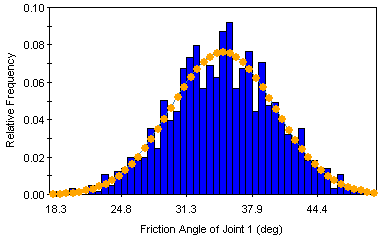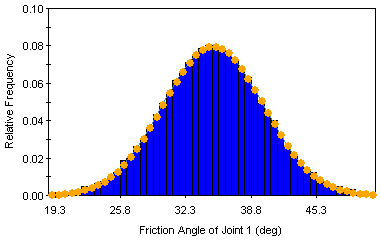Sampling
The Sampling options in the Project Settings dialog allow you to choose:
- Sampling Method
- Number of Samples
for a Probabilistic Analysis in UnWedge.

Sampling Method
The Sampling Method determines how the statistical input distributions for the Random Variables you have defined will be sampled.
Two sampling methods are available in UnWedge:
- Monte Carlo
- Latin Hypercube
Monte Carlo Method
The Monte Carlo sampling technique uses random numbers to sample from the input data probability distributions. Monte Carlo techniques are commonly applied to a wide variety of problems involving random behaviour in geotechnical engineering.

Latin Hypercube Method
The Latin Hypercube sampling technique gives comparable results to the Monte Carlo technique, but with fewer samples [Iman et. al. (1980), Startzman et. al. (1985)]. The method is based upon "stratified" sampling with random selection within each stratum. This results in a smoother sampling of the probability distributions. Typically, an analysis using 1000 samples obtained by the Latin Hypercube technique will produce comparable results to an analysis of 5000 samples using the Monte Carlo method [Hoek et. al. (1995)].

Number of Samples
The Number of Samples which will be generated for each Random Variable, for a Probabilistic Analysis. For example, if Number of Samples = 1000, then 1000 values of each input data random variable (e.g., Friction Angle of Joint 1) will be generated, according to the Sampling Method and statistical distribution for each random variable. The analysis will then be run 1000 times, and factors of safety will be calculated for each wedge, for each wedge arrangement, for each set of input data samples. This results in a distribution of Factors of Safety for each wedge, from which the Probabilities of Failure (PF) are calculated.
Advanced Location Dependent Scaling
The Sampling tab also has an Advanced Location Dependent Scaling checkbox. For more information about this checkbox see the Advanced Location Dependent Scaling topic.